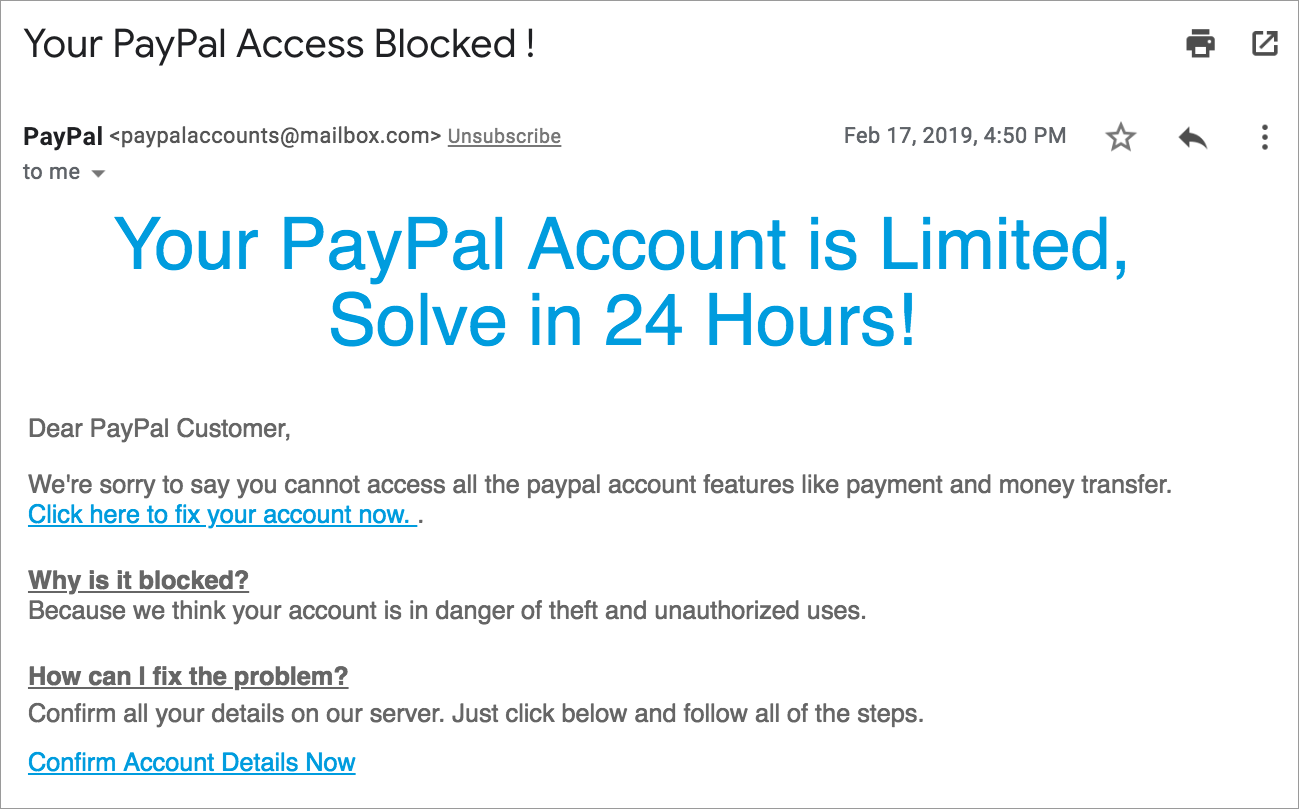Phishing Examples: Like can you spot this shitty scam?
Make no mistake, these attacks can be quite clever. After all, these types of phishing exist because they work. Let’s take a deeper look at two of the more common attacks.
Anatomy of an Email Scam
Below is a fake Charles Schwab notice claiming the recipient has been locked out of his account and must update it to regain access. Here are some clues indicating this email is actually a scam:
- The email is not addressed to the recipient. If the recipient was truly being notified by Charles Schwab that there was an issue with their account, they would know the recipient’s name.
- Again, they don’t know the recipient’s name;”Dear Customer” isn’t an identifier.
- The recipient hasn’t attempted to sign into a Schwab account, so could not have exceeded the number of attempts allowed.
- Grammatical errors: The words Online Banking are capitalized throughout the text. And, if you read carefully, the text says “Please visit www.schwab.com/activate Reset Account your account” which clearly doesn’t make sense, but since most people scan emails quickly, grammatical errors that are this small usually don’t get noticed.
- They try to reassure recipients by encouraging them to confirm the email is from Schwab….. by using a link they provide.
- Look at the sixth flag; this shows the true email address displayed when you hover your mouse over any link on this page (which is a red flag in itself, what company would have all of these actions point to the same link?). See that the website is actually http://almall.us? The scammer added the words /schwab.com/ after their website’s true name in an attempt to look legitimate, but this site is anything but legitimate.
Seeing any one of these flaws is enough to tell you the email is a phishing attempt – but what if these errors aren’t present?
A smarter scammer could have corrected these mistakes, including knowing the recipient’s name and email address, and masking their URL in a much more convincing manner. If they had done a better job, there would have been nothing alarming in the message. But it would still be a fake.
Sometime you won some lottery and some other things, doesn’t mean you really won it, those phising
attacks are really attractive to your mind to get something.
All of these are fake, keep in mind always clear your spam section and aware of those spam emails never get hope of winning from these emails.
Two Ways to All but Guarantee You Don’t Fall for Any Phishing Scam
Applying these two actions consistently will help protect you from online scams:
- Don’t click. Use your own link. If you use a product or service from the company apparently sending you the message, don’t click. Instead, navigate to the website via a browser bookmark or search engine. If the email is legitimate, you will see the same information when you log into your account on the legitimate site. This is the ONLY way to guarantee you land on the legitimate site.If you use the link or phone number in an email, IM, blog, forum, voicemail, etc. where you land (or who you talk to) is their choice, not yours. The website they take you to or the “bank manager” on the phone may be a convincing copy, but if you share your information it will be stolen and abused.
- Use a browser filtering extension. There are browser extensions that grade search engine results based on known characteristics or behaviors and may even prevent you from navigating to malicious sites. Generally, sites will be graded on a scale from safe to suspicious to high risk.
